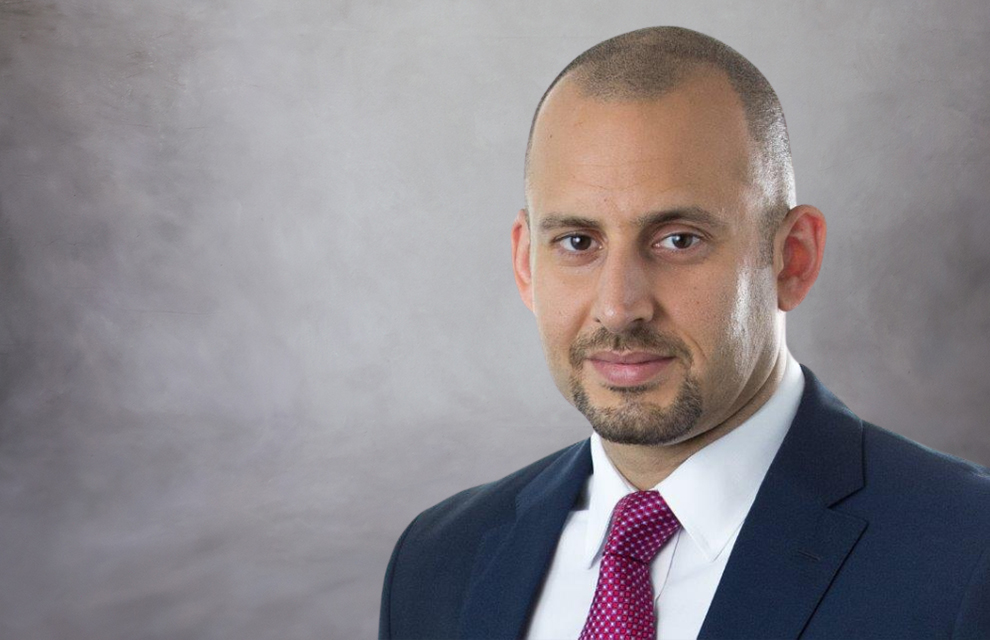How would you define the securities lending market in Saudi Arabia?
The securities lending market in Saudi Arabia is emerging with substantial growth potential having witnessed a record 2024 with securities on-loan peaking at nearly US$1.6 billion during the year. There are a couple unique dynamics in relation to Saudi Arabia, firstly that the market is historically driven by retail investors or high-net-worth individuals (HNWI) acting on a self-directed basis. Secondly, we have seen a large flow of foreign investment since the country’s inclusion in the MSCI Emerging Market Index in 2019 (approximately US$400 billion of inflows during that period). And thirdly, we have seen a notable shift towards institutional managers in the local investor population.
Combined, these dynamics lead to a very compelling opportunity for securities borrowing and lending (SBL) to grow quickly.
In terms of market infrastructure, a post-trade technology enhancement programme was implemented by the exchange and central securities depository (CSD) in 2022 which has greatly enabled SBL to develop. For foreign investor activity — having become significant and representing on average 15-25 per cent of value traded — these investors are natural first movers for supply and demand on activities like securities lending Shariah compliance is a very important aspect for local investors and enabling Shariah-compliant securities lending is one of the key priorities for us to access the large local retail and HNW lenders Foreign investor interest is increasing as Saudi Arabia strengthens its position in global financial markets. As with any emerging market, as this interest and exposure grows institutional investors look to deploy hedged and long/short strategies given the large allocations they have to a market such as Saudi Arabia. These types of mandates drive demand and requirement for capacity in the securities lending area.
For infrastructure development, custodians, asset managers, and brokers are developing capabilities to offer SBL, while key elements like collateral management and investment accounting are being upgraded to support these types of transactions.
Asset managers are looking at this from the perspective of generating additional income for their funds, especially those with large holdings and lower turnover strategies. On the other hand, there is demand from asset managers who are looking to launch ‘long-short’ mandates covering Saudi Arabia, which previously did not exist in the local market.
Key players in the market include major financial institutions and intermediaries collaborating with Tadawul and Edaa, this covers both local investment banks as well as foreign investment banks licensed by the Capital Market Authority (CMA) operating brokerage as well as custody services in the local market.
How do you compare the advancement of Saudi’s securities lending market with the rest of the Middle East?
Gulf Cooperation Council (GCC) markets have gone through various stages of development and advancement over the past 18 years, which started with the first regional markets being added to global benchmark indices from MSCI, FTSE, and S&P.
Over that time period, we have seen SBL as well as short selling regulations being published in GCC markets as early as 2010, with limited allowed use cases. In Saudi Arabia, the SBL regulations have existed since 2017, however the market has only seen notable growth between 2023 and 2024. Similarly, markets in the United Arab Emirates (UAE) have had SBL regulations since 2015, however the market is still not operating at the scale and activity that might be needed to consider it a key activity and liquidity pool in the market. Similar challenges can be seen in other GCC markets and we see them being addressed in various ways.
In general, the regulations, rules, and infrastructure to enable a liquid securities financing market need time to evolve. Many markets which look to enable this activity may have challenges in this initial approach or with market capabilities which do not enable market participants to realise the full potential of securities financing immediately. If we look at the challenges, they are generally similar across all GCC and largely other emerging markets:
• Regulations which are restrictive on the terms of SBL transactions, collateral requirements, and entities authorised to participate in this activity.
• Regulations that are challenging to adhere to in terms of short selling and utilising borrowed securities.
• Market infrastructure which is less smooth and efficient than global market practice, this is especially an issue in markets which require full disclosure of beneficial ownership at the CSD level, since they do not normally allow title transfer of securities.
• Participants and service providers who are not familiar with global operating models for SBL and who may have challenges in finding or implementing technology solutions, which include global practices and support local market infrastructure.
While it is difficult to point to a single reason as to the relative success of Saudi Arabia in activating and growing the SBL market versus other GCC markets, it is more likely a combination of addressing these challenges over a period of time which has enabled the market to develop.
In the case of Saudi Arabia, the recent challenges which have been addressed are the market infrastructure changes which were applied by Saudi Tadawul Group in April 2022 and more recently the draft regulations or close-out netting regulations issued by the CMA. However there will continue to be areas of development needed like Shariah-compliant securities lending, standardised market documentation and local triparty solutions.
In summary, as markets develop there will always be challenges to overcome and we have seen the same across all GCC markets, ultimately the largest driver to overcome these challenges is demand from borrowers and financial opportunities. However, even with significant demand and opportunity, if the market infrastructure or regulation does not enable it, the market cannot develop.
The success of Saudi Arabia in growing the securities financing market has been an evolution of addressing challenges over time and we expect that to continue as the kingdom targets the continued achievements of delivering on Vision 2030 initiatives and milestones.
How does SNB Capital contribute to the development of Saudi’s local securities lending market, and how has the demand from foreign investors evolved?
SNB Capital Company has contributed in a few key areas to the development of the local securities lending market. For example, it has provided awareness and thought leadership on the benefits of securities lending, including participation in industry bodies such as the International Securities Lending Association (ISLA) and subject matter conferences.
We are leading the market as the first local investment bank to be very active in local securities lending, the establishment of a securities lending desk, and in developing solutions to cater towards the local lenders in the Saudi market.
Furthermore, SNB Capital is working with regulators and the CSD — Edaa — to improve the infrastructure, regulations, and awareness that support growth in the market.
Demand from foreign investors has grown significantly in-line with the large participation in the market following Saudi Arabia’s inclusion in MSCI and FTSE EM indices.
In terms of foreign demand for securities lending, we have seen a significant increase in H2 2024 as the initial operating models implemented by SNB Capital — which caters towards providing foreign investors access to inventory from local lenders — have been very successful.
On the back of the close-out netting draft regulations issued by CMA and the Saudi Central Bank (SAMA) in February 2025, we expect the activity and interest from foreign investors to continue growing in this area.
What are the key regulations shaping the regional securities trading environment, and how is SNB Capital navigating the regulatory landscape?
CMA regulations governing securities lending are very general and not necessarily specific to the local securities market, they cover the activities of securities lending offered by any locally-regulated institution in any underlying securities market.
The recent Close-Out Netting and related Financial Collateral Arrangements Regulation issued by the CMA in February 2025 is expected to cover a key open area which was a lack of a clean netting opinion.
Saudi Tadawul Group including Saudi Exchange and Edaa each have a set of regulations covering short selling and securities borrowing and lending. These regulations have gone through updates over the past three years which greatly enabled the volume of activities we see now.
SNB Capital actively engages with the CMA and Saudi Tadawul Group to stay aligned with regulations. As a first mover in many products and services we provide feedback to these bodies on any practical challenges that exist from regulations which may be addressed in future revisions.
What are the biggest opportunities and challenges that SNB Capital sees in expanding its securities lending business in Saudi Arabia?
There is a continued growth in the market as more foreign investors access Saudi, increasing demand for securities lending services. Another opportunity in the market is the growing supply and demand from local investors as awareness of the benefits as a lender and interest in hedging as a borrower continues to grow. Supporting development of new financial products and funds which provide investors balanced and hedged exposure to the market, offers opportunities.
The Saudi market is facing challenges in a number of areas, including the education and awareness of the benefits of securities lending; ensuring Shariah-compliant structures for transactions, which remains an important requirement for local investors; and market standards of documentation and agreements. Furthermore, there is a challenge in finding support from triparty service providers for KSA-listed securities to be used as collateral.
Looking ahead, how do you anticipate the Saudi securities lending market will develop over the next few years?
Over the next few years, we expect increased participation and liquidity in the market from both local and international investors. We also see the development of new asset management and trading products and services that cater to a broader investor base. Thirdly, we expect an enhanced market infrastructure that will support a larger market, streamline securities lending processes and increase access to liquidity.
Next interview →
Riyad Capital
Abdullah Alshwer
 Image: Jalal Faruki
Image: Jalal Faruki 